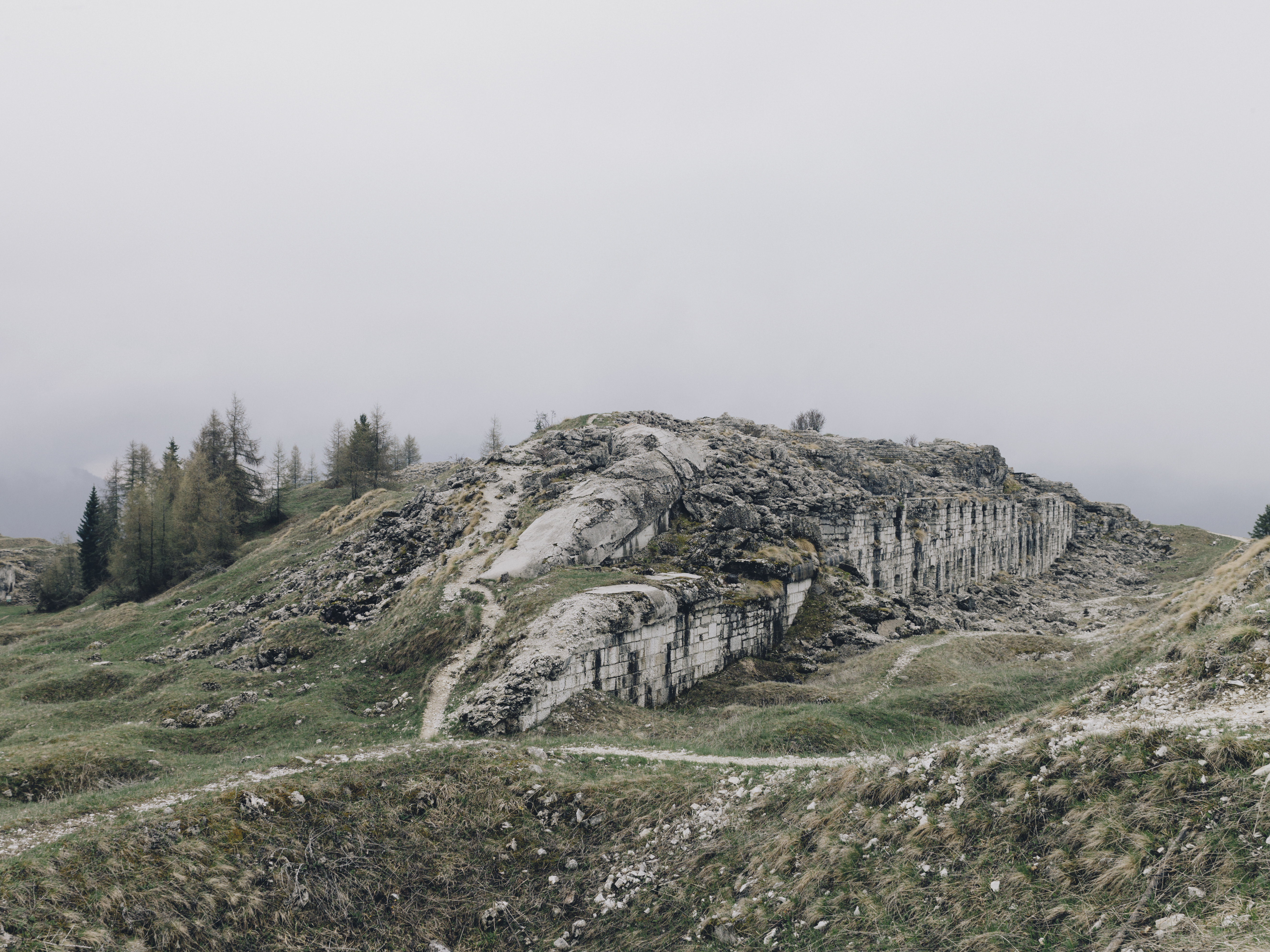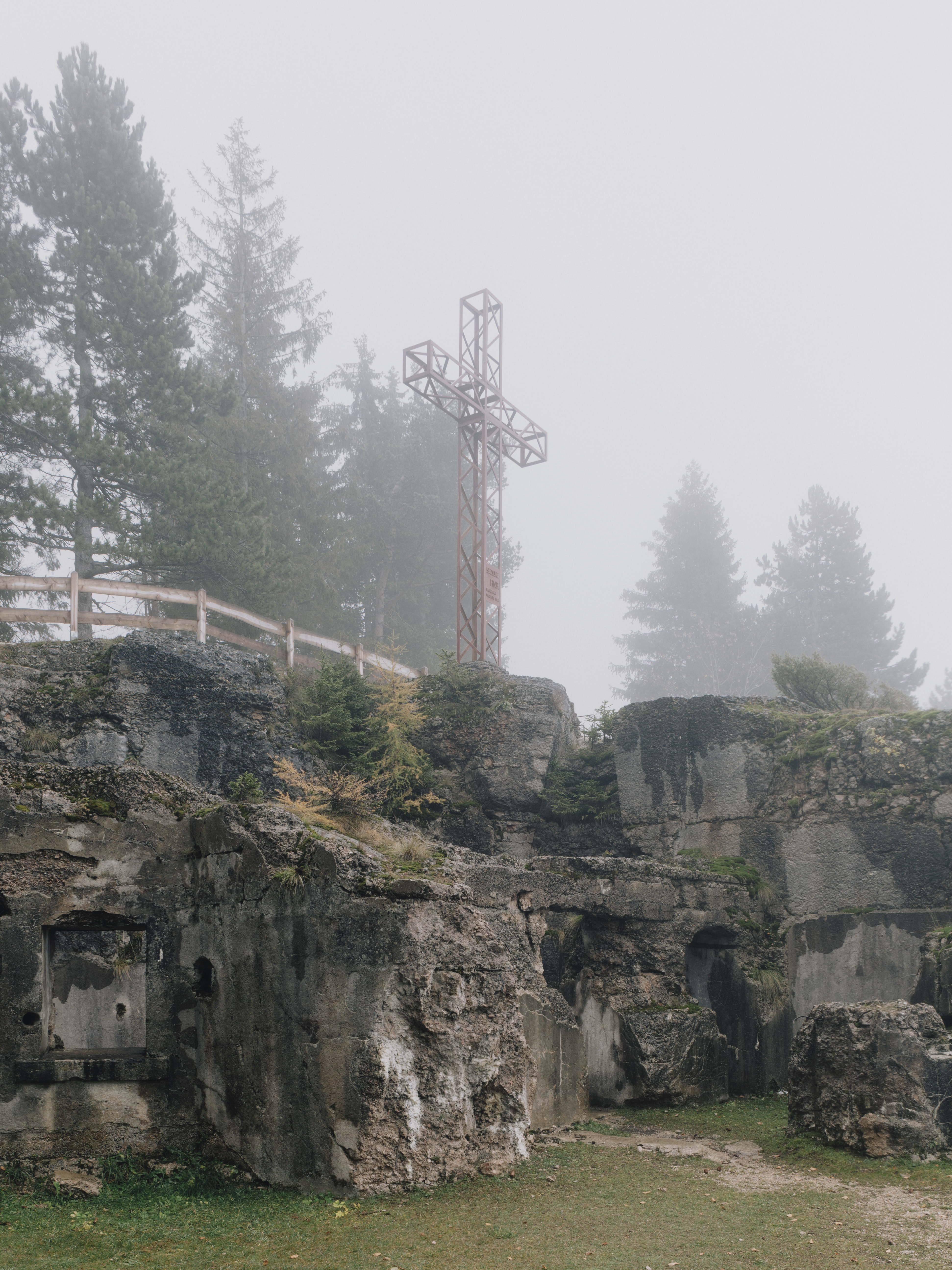
9 minute read
Marc Wilson discusses his latest book, Remnants
In Focus
Marc Wilson discusses his latest book, Remnants, with Nick Hodgson
All images ©Marc Wilson 2023
Remnants by Marc Wilson, published by two&two press as a first edition of 1,000, is priced at £32 and is available at www.marcwilson.co.uk/book-print-sales/p/remnantsbook

Bath-based photographer Marc Wilson was born in London in 1968. After studying Sociology at the University of Edinburgh, he completed a BA and then MA in Photography at the London College of Printing (now part of the University of the Arts in London). His work has been published widely around the world by the Guardian, Times, National Geographic, Wired and the BBC, amongst others.
Remnants is Marc’s fourth book, following on from The Last Stand (2014), Travelogue 1 (2020), and A Wounded Landscape – Bearing Witness to the Holocaust (2021) which is stocked in the bookshop at RPS House in Bristol. He was the last photographer to have an exhibition at Side Gallery in Newcastle before it recently (and hopefully only temporarily) closed its doors.
Remnants follows on from Wilson’s work The Last Stand on former second world war coastal installations and their relationship with the landscape. This time the work is set in the far north of Italy where fierce fighting took place in World War I between the allies (of which Italy was then a part) and the German army, in what was known as the ‘White War’ which ended one week before the armistice was signed in November 1918.

After your magnus opus A Wounded Landscape which took six years to create, Remnants seemed to happen very quickly. How did this come about?
I was approached by an Italian architect called Marco Ferrari in 2019, who had seen my work The Last Stand and told me how much he admired it. He explained the research he had undertaken about the former first world war alpine landscape of Trento in northern Italy, due north of Verona, where there are numerous sites of long-abandoned concrete bunkers, forts and other military installations. As we spoke, I realised it was a perfect fit for me, because the research had been done so I could fall into the work from a creative perspective. The timing also suited me because I was coming to the end of the lengthy process of publishing A Wounded Landscape. Remnants was a really great opportunity to make a straightforward body of work after the mental battering I’d had over the subject matter of A Wounded Landscape.
I get itchy feet if I haven’t got at least one idea on the go, so all of this seemed like a project that would be very soothing and beneficial to me. It was also a logical extension of The Last Stand, not just photographing another set of abandoned military installations, but taking everything one stage further – not just about the object in the landscape but an extension of that. The project is about the creation of a new landscape, blending the manmade buildings with the rural landscape and creating almost a third landscape, or as Marco puts it, the ‘new ecology’ of a hybrid landscape. The manmade concrete materials are blending with the natural landscape to become something more, with a fascinating hybrid future ahead of it.
Was this an area of Italy that you had visited before?
No. Although I’d been to Italy many times before, I knew nothing about the history of Trento and its mountainous landscape. I visited the area, did more research and quickly realised the landscape was beautiful. It immediately connected with me from both an emotional and historical point of view. The thought of spending time in the mountains with my camera was very appealing. I organised two four-week trips, to both reccy and shoot. I had a list of locations supplied on Google Maps by Marco and I had an idea of how I wanted to spend my time. If it was sunny, I’d reccy and if it was grey, misty, and damp then I’d shoot. I then showed Marco work-in-progress to make sure that the visuals I was creating worked well with his research, something that would be essential for future exhibitions.

Documenting the relationship between mankind’s trace and the landscape can often feel melancholic and disturbing, but you seem to have approached Remnants in a more positive way than that.
I think so, but it was not preconceived, it was simply a reaction to the landscape that I found myself in. Unlike The Last Stand, where I would come across former military pill boxes looking lost in the sands at the bottom of cliffs, I found objects that had basically become part of the landscape, literally physically, mentally, and emotionally in every possible way. The wooded alpine landscape felt softer, and gentler. It felt as if the manmade objects had let themselves fall backwards into the landscape, allowing them to be consumed, subsumed and connected. Yes, there is a narrative of trauma and tragedy behind these locations, but this is a body of work about becoming one with the landscape. The mountain scape is so big that these remnants of war are dwarfed by the sheer scale of the locations. I felt the scenes in front of me were guiding me, directing me, which was a different way of working for me.
I had done a lot of preparation, scouting locations and working out composition ideas and how best to photograph them. Without sounding too technical, I remember the first location I visited, Forte Busa Verle (image on page 13), and thinking “Wow!”. I had come across an object that looked like an alien spacecraft that had landed in the mountainous landscape and was now being consumed by grass and hills, so I was left in no doubt about the potential visual power of this project. I then revisited the locations with my camera, often with early starts and in mist and rain.

Your aesthetic is distinctive with muted tones, mists and even snow. This aesthetic is also present in your other works such as The Last Stand and A Wounded Landscape. How did you come to achieve this in your work?
I think it came about from doing early work that was terrible and realising that, although people liked some of this work, I never felt it was that good! So in the early days when I was working on The Last Stand, I’d research a location and return many times shooting at different times of the day and in different seasons. You are not necessarily at the mercy of nature, as you can control the light. I can choose the time of day, the weather conditions, check the tide times, etc. so my aesthetic came from that. Generally speaking, the flatter, the duller the weather, the better for me.
My job as a photographer is to create the arresting visual images that makes the viewer want to stop and think, read the image and read the accompanying text to contextualise everything. And these muted tones work really well for the subject-matter.
Remnants was shot in October 2021 and March 2022, with lots of early starts. Sometimes I’d leave the village where I was staying in bright sunshine and reach the location in the mountains a few kilometres away in rain and mist. There are no people in these images because that can be a distraction with a body of work like this – it’s not about one person’s story, even if it’s partly about a war that took many lives.
The accompanying text has a really important role to give people the background information. It’s not a game. I want people to understand what they’re looking at.
They initially choose to look at an image, and then have a second choice whether they want to read the image. Text allows people to understand to a greater depth by reading the small captions and comments. It helps lead the viewer, like an arm around the shoulder, through the images. I want the viewer to imagine themselves there today, not a hundred years ago when it was a warzone. And there’s an opening essay which contextualises the project, which is obviously very helpful.

What’s the reaction been like in Italy?
I’ve had four exhibitions in Italy already and the reaction so far has been fantastic. Marco has adopted a multi-disciplinary approach, using his text and research, my images, and some illustrations of the locations. An artist has taken earth and flora samples, and another has built some three-dimensional models of the buildings. Marco’s been amazing at getting funding from Italian corporates which, from my perspective, has meant that production costs were all met so that I’ve been able to concentrate on the photography.
You self-publish. Why is this? Is it mainly about control of the design, edit and printing processes?
My first book, The Last Stand, had a publisher but during the second edition they went out of business, so I became a self-publisher almost by default. This has allowed me to have much more input into the whole process. With Remnants, it’s not about me being in total control as I always collaborate with a designer and bow to their genius and brilliance. They often laugh at some of my ideas, although it’s good to test assumptions. But self-publishing allows me to be in control of how I make my living. So now I’m not just a photographer, I wrap up the books, stick labels on packages and go to the post office. But it allows me to fund new work as all the revenues come to me. My books are a financial investment that allow me to make new work. The harder side is the distribution, but I seem to do alright! But it hasn’t altered the way I work. I’ve never once had to compromise commercially. I just make work that seems to sell quite well. And it also allows me to build a connection with the people who buy my books.
What kit did you use for Remnants?
Given it was a relatively quick project and I also wanted to share work-in-progress with Marco, I shot Remnants digitally using a Leica M with an old Nikkor shift lens and EVF. So a lightweight body and one lens and filter, all very portable in the mountains, and with low post-production costs. The shift lens allowed me to get everything right ‘in camera’, meaning there was very little post-production work required.





